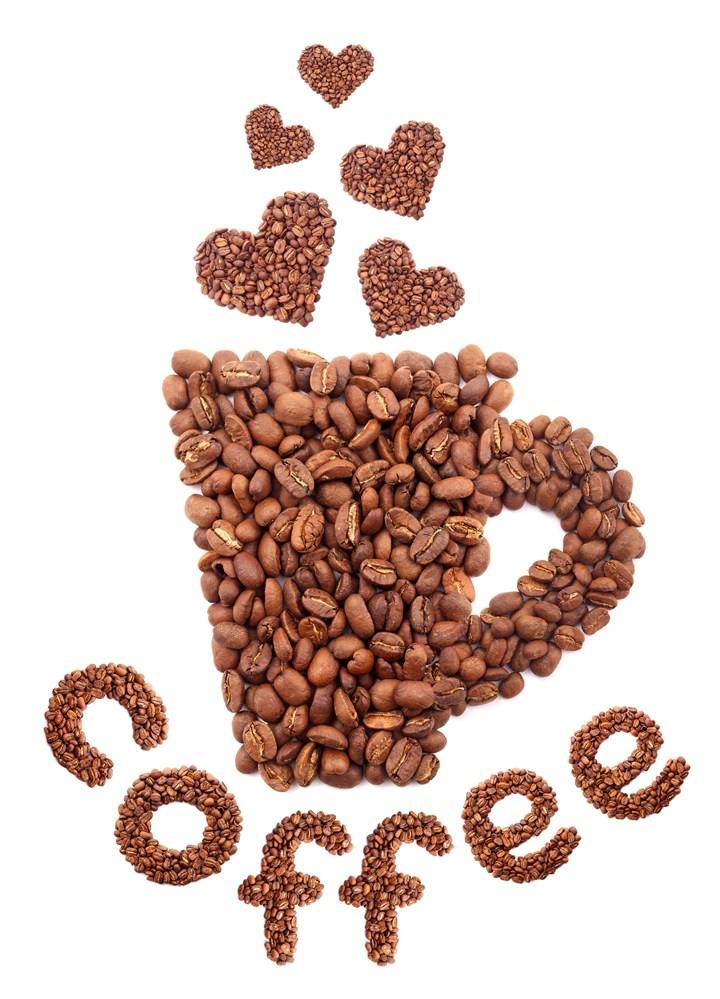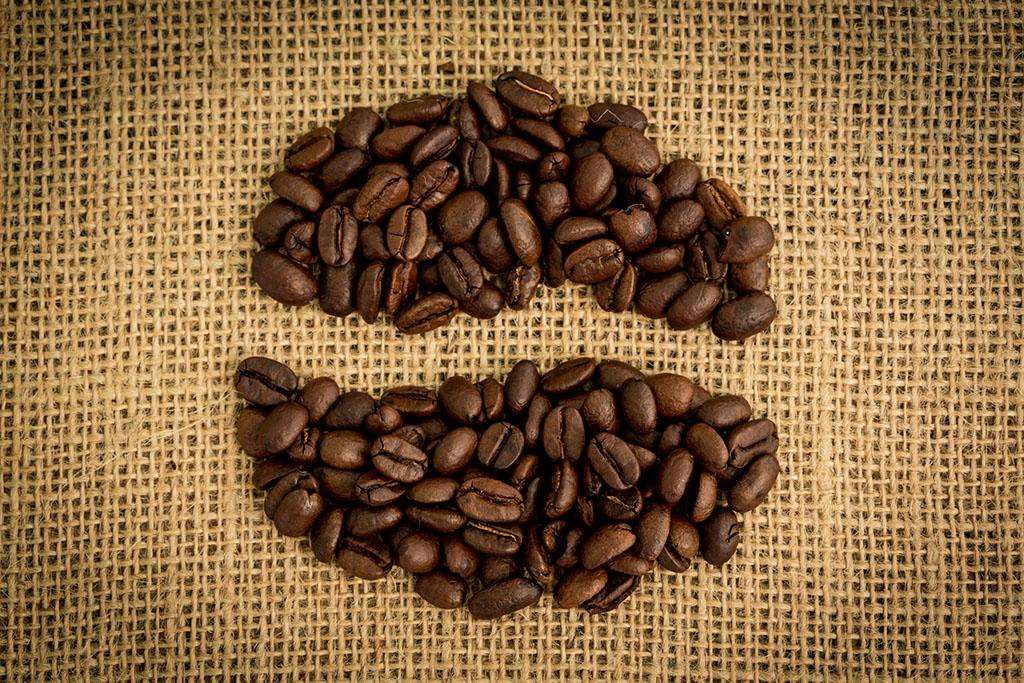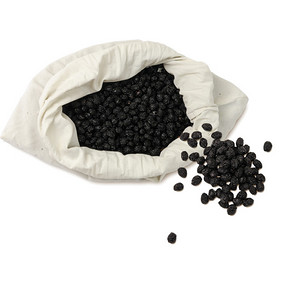An introduction to the altitude History of Coffee Bean Flavor planting areas in Hawaii
Kona coffee beans from Hawaii have the most perfect appearance, their fruits are extremely full and shiny, and they are the most beautiful coffee beans in the world. The coffee is smooth and fragrant, with an attractive nutty flavor and a well-balanced acidity, as charming as the colorful colors of the island of Hawaii and a long finish.
Kona coffee beans are average and neat in shape, with strong sour and sweet taste, moist and smooth taste. Because they grow on volcanoes and have high-density artificial farming, each bean can be said to be a spoiled "lady" with beautiful, plump and baby-like skin. The volcanic soil and tropical climate, coupled with slight humidity and regular afternoon showers, create an ideal planting environment that can only appear in idyllic poetry, and add some meticulous but unique flavor characteristics to the coffee beans here.
In terms of flavor, Kona coffee beans are closer to Central American coffee than Indonesian coffee. Its average quality is very high, carefully handled, medium texture, good sour taste, very rich flavor, and fresh Kona coffee is extremely fragrant. If you think Indonesian coffee is too thick, African coffee is too sour, and Central and South American coffee is too rough, then "Kona" may suit you. Kona is like a girl in the Hawaiian sunshine breeze, fresh and natural.
After nearly two centuries of efforts to grow coffee in Hawaii, the term Kona is almost synonymous with "quality". Hawaii has superior geographical conditions for growing coffee, but historically, the road to growing coffee has been rugged since coffee trees were first introduced to the island in 1825. Even today, factors beyond human control tend to have an impact on the harvest in a coffee-growing area as successful as Hawaii.
Unique "free shade"
Hawaii, which spans latitudes 19 to 22 degrees, south of the Tropic of Cancer and blown by trade winds, is a perfect coffee-growing area. The 50th state of the United States, 2400 miles from the west coast of the United States, is the only state in the United States that produces coffee. Hawaii's coffee is also internationally famous and is regarded as one of the best coffee in the world.
Follow the caf é (Wechat official account vdailycom) and found that Beautiful Cafe opened a small shop of its own.
The coffee is grown on the five main islands of the Hawaiian Islands, namely Oahu, Hawaii, Maui, Kauai and Muroka. Coffee from different islands also has its own characteristics. Kauai coffee is soft and smooth, Muroca coffee is high in mellow and low acidity, and Maui coffee is moderately acidic but has the strongest flavor. Hawaiians are extremely proud of the Arabica coffee beans they grow 100% home-grown.
Big Island is the largest of the Hawaiian islands, so it is also called the Big Island. The most famous Kona coffee is produced in the western and southern part of the Kona region of Hawaii, and coffee trees are scattered on the hillsides of Hualalai and MaunaLoa. Regrettably, the coffee producing area is about 30 kilometers long and only about 1400 hectares produce Kona coffee.

The excellent quality of Kona coffee benefits from the suitable geographical location and climate. Although Hawaii is often affected by tornadoes, the climatic conditions are very suitable for the coffee industry. There is plenty of rain and sunshine here, and there is no worry of frost. Coffee trees are planted in relatively desolate areas, but their soil is fertile and contains volcanic ash. The geographical location of the coffee tree growing on the volcanic hillside ensures the altitude needed for coffee growth; the dark volcanic ash soil provides the necessary minerals for coffee growth. The climate is very suitable. In the morning, the sun gently passes through the air full of water vapor. In the afternoon, the mountains become more humid and foggy, and the white clouds surging in the air are natural umbrellas for coffee trees, showing a strange natural phenomenon called "free freeshade". At night, it becomes sunny and cool, and there is absolutely no Frosts Descent.
With such superior natural conditions, the yield of Arabian coffee in Kona is higher than that of any other plantation in the world and has always been of high quality, reaching 2240 kg per hectares. the yield of coffee in Latin America is only 600kg-900kg per hectare.
It is particularly comforting that Kona's coffee trees (at least those growing above 900 meters above sea level) do not seem to be affected by any diseases and insect pests.
You should know that the diseases and insect pests of coffee trees are very serious, especially a small coffee fruit borer called Coffee Berry borer. There is usually no other way to get rid of this disease and insect pests but to spray heavy pesticides, and people and animals are not allowed to enter within two weeks of each application, otherwise there is a risk of pesticide poisoning. Kona, Hawaii is blessed with no such pests, so it is naturally environmentally friendly and free of pesticide pollution.
But overall, Kona coffee is extremely expensive because of its small producing area, high income in Hawaii and a large number of tourists.
A noble and ancient bloodline
The real Hawaiian Kona coffee gives people a unique pleasure, which comes entirely from the oldest Arabica coffee tree.
The earliest settlers of Hawaii arrived here around 300-400 A.D., and historians speculated that they were from the Marcos Islands. People are scattered into different tribes that live on the island and are led by hereditary chiefs. The earliest Hawaiian residents created the rich musical culture of Hawaii, although not many words have been preserved.
Europeans discovered Hawaii by accident. They were looking for a legendary passage to the east where spices were produced, but they found the richest pearl in the Pacific Ocean. A captain named James Cook landed at Kauai in 1778 to resupply his ship. He encountered severe cold and storms on his way back, so he had to return to Hawaii at the beginning of the next year and anchor on a beach in Kona.
Since then, the Hawaiian islands have become an important port of call on world trade voyages. The chiefs of Hawaii exchanged sandalwood, the island's specialty, for weapons, goods and livestock with passing ships. From the 1820s, Western religion began to spread widely on the island, and many churches built at that time are still in use today.
In 1813, a Spaniard first grew coffee in the Manoa Valley Valley of Oahu, which is today the main campus of the University of Hawaii. In 1825, an English agronomist named John Wilkinson transplanted some coffee from Brazil to grow in the coffee garden of Chief Birch on the island of Oahu. Three years later, an American missionary named Samuel Riveland Rags brought the branches of the coffee tree from Birch Emirates Garden to Kona, a descendant of the Arabica coffee tree that first grew on the Ethiopian plateau. Kona Coffee still carries on its noble and ancient lineage.
A paradise for tasting and buying coffee
The earliest coffee cultivation in Hawaii had adopted the model of large-scale coffee plantations, and at that time, coffee had not yet become a widely grown crop in the world, and the production and sale of Kona coffee had experienced several ups and downs. After the outbreak of World War I, the demand for coffee increased sharply, and the government bought a lot of coffee for soldiers in order to maintain their combat ability. the rise in demand led to a rise in prices, and Kona coffee was no exception. The period from the outbreak of World War I to 1928 was the golden age of Kona Coffee. But the Great Depression that followed dealt a heavy blow to Kona Coffee. In 1940, the second World War caused the price of coffee to rise again. In order to avoid excessive price increases, the US government set a price cap for coffee. Even so, coffee farmers in Hawaii got a lot of benefits. During this period, their means of transportation for transporting coffee fruits were all replaced by donkeys and jeeps. In the 1970s and 1980s, the price of Kona Coffee experienced several ups and downs, but it was from this period that Kona Coffee established itself as the top coffee in the world.
The raw beans of Hawaiian Kona Coffee are usually 100 packages of individual coffee beans. Kona coffee beans are also often used to make mixed coffee along with coffee beans from other parts of the world. Kona coffee beans mixed with other beans are marked with "Kona mixed beans (Kona Blend)" on the package. unfortunately, the content of Kona beans in these mixed beans may be very low, and the minimum content of Kona beans in Hawaii that can use the "Kona" label is only 10%. Therefore, if you are not in Kona in Hawaii, it is difficult to have 100% pure Kona coffee beans.
Kona coffee has always been grown at home. At first, only men were allowed to work in the coffee garden, and later women joined in. This kind of family production of Hawaiians preferred to rely on the efforts of their families rather than hiring workers to work, so it was normal for Hawaiians to have eight or nine children at that time. Since then, new immigrants from the Philippines, the United States and Europe have come to Hawaii to engage in the coffee industry. Over time, Hawaii has formed a social atmosphere that centers on family culture and is easy to absorb foreign cultures. and make it a major feature of Hawaii.
Coffee trees are grown commercially on all the islands of Hawaii, but at present, the Big Island has the largest number of coffee farms, about 650, but these coffee farms are relatively small. A total of less than 2000 acres of planted woodland, there are only 25 coffee farms operating in Oahu, Maui, Kauai and Muroka. However, the coffee plantations in these places are much larger than those on the big island, and the total output is more than three times that of the big island coffee garden. Surprisingly, Kauai has the largest coffee-growing area of any island, with more than 4000 acres, but it is all managed by the same operator; Muroka has only 550acres of coffee, and Maui and Oahu have even fewer. Most Hawaiian coffee farmers still pick fresh coffee cherries to sell today, but in recent years more and more people are committed to adding value to their coffee bean products, so they mostly go to their own post-processing, drying, grinding and baking their own coffee beans.
Hawaii is also a paradise for tasting and buying coffee. Hawaii has a well-developed tourism industry, and each island has several unique places for tourists and local residents to taste and buy coffee, including comfortable and warm shops and comprehensive centers to introduce coffee knowledge. Visitors can visit the coffee farm, see or participate in various processes such as coffee harvest, coffee bean processing, roasting and grinding, and make a cup of coffee that really belongs to them. In the Kona region, there are about 600 independent coffee farms, most of which are small family farms, usually between 18 and 42 acres. Kona Coffee earns more than $10 million a year for these coffee farms.
Hawaii Kona Coffee Culture Festival: every November, the Kona region of Hawaii Island holds a grand Hawaiian Kona Coffee Culture Festival (Kona Coffee Cultural Festival) to celebrate the harvest of Hawaiian Kona coffee beans (Kona Coffee) and commemorate the nearly 200-year-old tradition of Hawaiian coffee beans. During the nearly 10-day event, more than 40 coffee culture and competitive activities will be held in Hawaii, Big Island and Oahu to popularize Kona coffee knowledge and give tourists around the world a chance to get close to Hawaiian Kona coffee beans.
High-quality products second only to Blue Mountain
Kona coffee beans are actually subdivided into five levels, and the first three levels are more common, followed by extra good (ExtraFancy), good (Fancy) and No. 1 (NumberOne), Primary (primary) and Peaberry (round beans, commonly known as male beans, because some coffee lovers prefer, especially pick out higher prices, about 5% of Kona coffee beans are Peabry type.) Except for the special selection of Peaberry, the other four grades are graded according to the size, weight and defect ratio of beans. Before the Kona raw beans are exported, a number label is affixed to the sack, which indicates that it has been certified by the Hawaiian Department of Agriculture, with an identified official seal.
From the above, it is not difficult to see that the price of 100% Kona coffee is not cheap. The cheap 10% Kona coffee on the market is actually mixed with other foreign coffee beans. And these cheap coffee is also a serious threat to the livelihood of local coffee farmers, and has been actively and relevant parts to win the designated origin certification of Kona coffee.
To sum up, one of the main factors is the high cost of labour. Most of the world's famous coffee production sites are located in third World countries, where there is a generally cheap labor market. The south coast of the Big Island of Hawaii is the Kona Coffee growing Belt, where workers have been using pure manual methods. Kona coffee is sown, picked, washed, sunburned and polished, all by hand, so the output is limited and manual treatment in the United States. it looks high-quality and expensive! Coupled with the growing demand for individual coffee in places such as the United States, its unit price is not only getting higher and higher, but also not easy to buy. At present, the price of Kona coffee is second only to Blue Mountain coffee.
Other islands of Hawaii are trying to catch up with Kona's high quality standards. For many beach activities and coffee lovers, Hawaii is really like the image portrayed by Mark Twain, the most enjoyable place on earth.
Important Notice :
前街咖啡 FrontStreet Coffee has moved to new addredd:
FrontStreet Coffee Address: 315,Donghua East Road,GuangZhou
Tel:020 38364473
- Prev

Introduction to the treatment of Hawaiian coffee bean honey
Follow the caf é (official Wechat account vdailycom) and found that the Beautiful Cafe has opened a small shop of its own, located in the southernmost area of Cau on the Big Island of Hawaii, and is the largest and most remote coffee farmer in Hawaii.
- Next

Description of taste and flavor of Hawaiian Kona coffee beans
Following Kaibei (Wechat official account vdailycom) found that the word Hawaii, which opened a small shop in Beautiful Cafe, originated from Polynesian. Around the 4th century AD, a group of Polynesians came in a canoe and settled here, naming the island Hawaii, which means primitive home. The sky and sea here are the clearest colors, and marshmallows are as white as marshmallows.
Related
- Detailed explanation of Jadeite planting Land in Panamanian Jadeite Manor introduction to the grading system of Jadeite competitive bidding, Red bid, Green bid and Rose Summer
- Story of Coffee planting in Brenka region of Costa Rica Stonehenge Manor anaerobic heavy honey treatment of flavor mouth
- What's on the barrel of Blue Mountain Coffee beans?
- Can American coffee also pull flowers? How to use hot American style to pull out a good-looking pattern?
- Can you make a cold extract with coffee beans? What is the right proportion for cold-extracted coffee formula?
- Indonesian PWN Gold Mandrine Coffee Origin Features Flavor How to Chong? Mandolin coffee is American.
- A brief introduction to the flavor characteristics of Brazilian yellow bourbon coffee beans
- What is the effect of different water quality on the flavor of cold-extracted coffee? What kind of water is best for brewing coffee?
- Why do you think of Rose Summer whenever you mention Panamanian coffee?
- Introduction to the characteristics of authentic blue mountain coffee bean producing areas? What is the CIB Coffee Authority in Jamaica?

